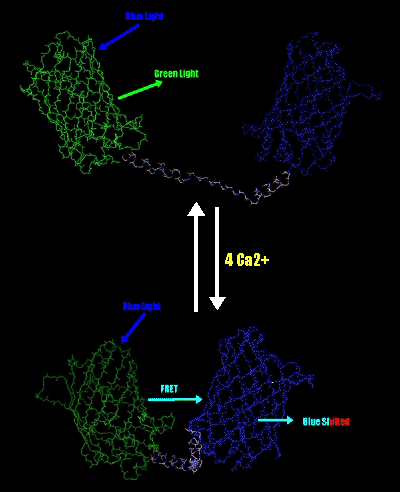Cameleon: (measuring calcium in vivo)
Cameleons have been devised by Roger Tsien and others. They are based on fluorescence resonance energy transfer (FRET) between two fluorescent molecules that are linked by a short stretch of calmodulin, a protein that changes its shape in the presence of calcium. In the absence of calcium the two fluorescent proteins are well separated. However, upon binding with calcium, the two green fluorescent protein mutants are brought closer together. The more calcium that is present, the closer the two fluorescent molecules come to each other and the more FRET occurs. These calcium sensors are called Cameleons because they change color and have a long tongue (calmodulin) that retracts and extends in and out of its mouth when it binds and releases calcium. Unlike their namesakes, Cameleons are spelled without an “h” — thats because the chemical symbol for calcium is Ca.
The GCaMP calcium sensors are the most widely used and fastest genetically encoded calcium indicators. Every couple of years a new and improved version of GCaMP is released. In 2023 it was JGCaMP8’s turn, it was designed for fast and senstitive calcium monitoring in neurons.
